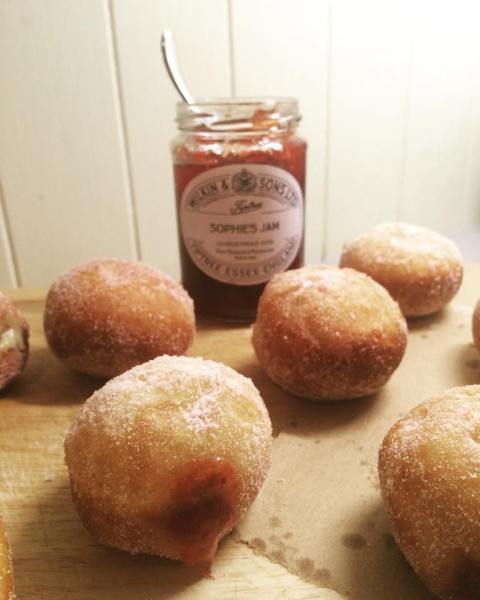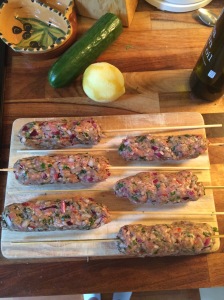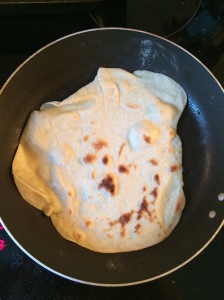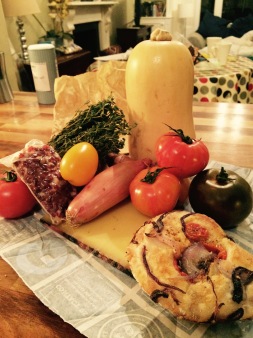I was 11 when I first went to Italy. Some family friends had invited me to go for the last 3 weeks of the summer holidays. At first, I was physically ill with the thought of leaving Mum and my family for that long. For the whole journey from Bath to London, as the other two kids sang along to Miss Dynamite, I sat in the middle with a feeling of dread and longing to be back with Mum.
Flying in to Rome, we drove up to Cortona in Tuscany and homesickness quickly switched to excitement and intrigue as we drove through the dusty, heat haze, up the poplar-lined track and towards the shuttered farm house that sat alone, surrounded by pine-laden hills. The aroma of pine and the sound of crickets still takes me right back to that holiday.
The next few weeks were filled by exploring the gardens and surrounding hills. We spent the days chasing and catching lizards, building rope swings and attempting to build a make-shift pool out of what I think was an old skip. We soon discovered that masking tape wasn’t going to hold the holes together and moved on to trying to find wild boar- thank goodness we didn’t succeed.
Italy was where I discovered tomatoes. Not the kind you get in England but big, sun-ripened bursting ones with deep red skins. Helping to prep them in the stone-floored, cool kitchen, you couldn’t ignore the aromas coming from them- they were like nothing I’d ever experienced. We’d eat them in the shade with buffalo mozzarella, hams, salamis, rocket and fresh bread- what more could you possibly want.
It’s also where I discovered gnocchi, in a small restaurant in Cortona. Bored of ordering spaghetti bolognese and margarita pizza (I was 11, don’t judge me), I was given a verbal slap on the hand and told to order something different. I loved it.
This recipe is a tribute to that holiday. I’ve used Unearthed prosciutto del Poggio as I feel their open mind to discovering new foods is on a par with how my 11 year old self felt during those three weeks of exploration and discovery. I’ve paired it with cavolo nero, a shallot, tomato, garlic and thyme sauce, mascarpone and homemade gnocchi.

Ingredients
- 2 packs Unearthed Prosciotto– from Waitrose (I used 12 rashers and ate the rest)
- 200g cavolo nero (use kale if you can’t find)
- 12 tsp mascarpone
- Parmesan to serve (optional)
For the gnocchi
- 1kg floury potatoes
- 175g ’00’ four (use plain if you can’t get)
- 2 large egg yolks
- generous pinch of salt
For the sauce
- 2 large echalion (banana) shallots, finely sliced
- 4 fresh plum tomatoes, diced
- 2 large garlic cloves, chopped
- 680g jar of passata (I used Cirio)
- 3 sprigs of thyme
- Splash of balsamic vinegar
- 1 tsp tomato puree
- Generous glug of olive oil
Method
- Preheat the oven to 160ºC. Rub the potatoes in olive oil and place on a parchment lined baking tray. Bake for 1.5 hours, or until soft- this will depend on their size. Turn them half way through to cook evenly. (If you’re impatient, put them in the microwave 2 or 3 at a time and cook in bursts until soft all the way through).
- While your potatoes are in the oven, make your sauce. Heat the oil to a medium heat and add the shallots and garlic. Fry, stirring for 5 minutes until soft.
- Add the chopped tomatoes and leaves from the thyme sprigs and cook until the tomatoes have broke down. Keep stirring to make sure they don’t catch and add a splash of water if it gets too dry.
- When it’s looking paste-like, add the balsamic vinegar and tomato puree, stir to incorporate then add the passata. Leave on a low simmer, stirring occasionally until needed late. Slow cooking tomatoes really brings out their flavours.
- When the potatoes are soft, leave to cool for a few minutes and then carefully remove the skins. If you’ve got sensitive hands and want to get on with things then don some clean washing up gloves- these will protect your hands from the heat.
- Put the potatoes 1 by one through a potato ricer or pass through a sieve in to a large mixing bowl. Add the egg yolks, sieved flour and salt. Bring together with a round-ended knife and then your hands to form a dough.
- Tip out on to a lightly floured surface and knead lightly. Roll in to a thick sausage shape and cut in to 4 pieces. Roll the first piece out in to a thinner sausage (about 1.5cm thick) and cut in to 2cm pieces. Pinch gently in the middle and place on a parchment-lined tray.

- Turn on the grill to high and boil two pans of water- one for the gnocchi and one for the cavolo nero. Put the cavolo nero in the pan for no more than a minute, then drain, cool under cold water and set aside.
- Cook the gnocchi in two or three batches. It’s cooked when it floats to the surface. remove with a slotted spoon and add to the sauce. When it’s all cooked, stir the kale in to the gnocchi and sauce and tip in to a large baking dish. tear the ham in to roughly two pieces and push in to the gnocchi, keeping the top exposed. Dot with teaspoons of mascarpone.
- Place the dish under the grill, keeping a watchful eye. You want the ham to crisp up a little on top and for the mascarpone to brown slightly. When this is done, you’re good to go, serve with a salad and a good Italian red-divine.
Going on this trip proved that you often get the most out of doing things that you’re scared of and taught me a valuable lesson in using fear to keep exploring and keep discovering.












